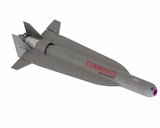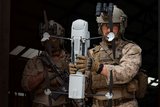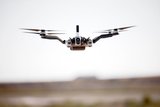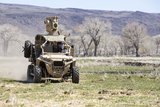JLENS put into strategic reserve by US Army
The US Army has put one Joint Land Attack Cruise Missile Defense Elevated Netted Sensor System (JLENS) airborne radar system into strategic reserve, enabling the system to be rapidly deployed at short notice for strategic surveillance and detection of threats.
The US Army has acquired two JLENS systems from Raytheon to date, with the second system scheduled to participate in an operational evaluation at Aberdeen Proving Ground, Maryland, later this year.
JLENS is an aerostat-borne radar system that floats at altitudes as high as 10,000 feet while tethered to ground stations via a rugged cable. Raytheon developed the system for the protection of critical assets, population centres and infrastructures against a variety of threats, such as manned- and unmanned- aircraft and missiles.
Dave Gulla, vice president of Integrated Defense Systems' Global Integrated Sensors business area, Raytheon, said: ‘By putting JLENS in strategic reserve, the army is giving combatant commanders around the globe the ability to pick up the phone and, in short order, receive this incredible air defence capability in their area of responsibility.’
The system completed Early User Testing with the US Army in the third quarter of 2013, and concluded system design and development in the fourth quarter of 2013.
JLENS’ testing programme has included tracking and targeting airplanes and drones, and helping destroy cruise missile targets by integrating with the Patriot Air and Missile Defense System, Standard Missile 6 and AMRAAM defensive systems. JLENS has also tracked threats such as swarming boats, unmanned aircraft, and detected tactical ballistic missiles in their boost-phase.
Doug Burgess, JLENS program director, Raytheon, added: ‘JLENS has proven its ability to extend the air-defence umbrella by integrating with our nation's land-, sea-, and air-based air defences to detect and intercept threats, such as airplanes, drones and cruise missiles. The success of this operational evaluation is another significant step forward because it will demonstrate that JLENS has unmatched defensive capabilities. Raytheon is doing its part to get both the soldiers and the system ready.’
More from Uncrewed Vehicles
-
![Cummings Aerospace showcases Hellhound loitering munition designed for US Army’s LASSO programme (video)]()
Cummings Aerospace showcases Hellhound loitering munition designed for US Army’s LASSO programme (video)
Cummings Aerospace presented its turbojet-powered Hellhound loitering munition at SOF Week 2025, offering a man-portable solution aligned with the US Army’s LASSO requirements.
-
![SOF Week 2025: PDW unveils attritable FPV drone for SOF operations at scale]()
SOF Week 2025: PDW unveils attritable FPV drone for SOF operations at scale
PDW has revealed its Attritable Multirotor First Person View drone at SOF Week 2025, offering special operations forces a low-cost, rapidly deployable platform for strike and ISR missions, inspired by battlefield lessons from Ukraine.
-
![SOF Week 2025: Teledyne FLIR white paper provides guidance on reusable loitering munitions]()
SOF Week 2025: Teledyne FLIR white paper provides guidance on reusable loitering munitions
Teledyne FLIR is highlighting the emerging requirements for 'recoverable and re-usable' loitering munitions across the contemporary operating environment during this week’s SOF Week conference in Tampa, Florida.
-
![SOF Week 2025: Kraken Technology group debuts K3 Scout USV in North America]()
SOF Week 2025: Kraken Technology group debuts K3 Scout USV in North America
High-performance maritime industry player Kraken Technology Group, based in the UK, has used the SOF Week conference in Tampa, Florida this week to debut its K3 Scout uncrewed surface vessel (USV) to the North American market.
-
![Palladyne AI and Red Cat to demonstrate capabilities for autonomous drone swarms to the US military]()
Palladyne AI and Red Cat to demonstrate capabilities for autonomous drone swarms to the US military
Red Cat and Palladyne AI recently conducted a cross-platform collaborative flight involving three diverse heterogeneous drones.
-
Jammer resistant drone designs spark search for countermeasures
The Russia-Ukraine conflict has driven another stage of evolution for drones and the counter measures to defend against them.

























